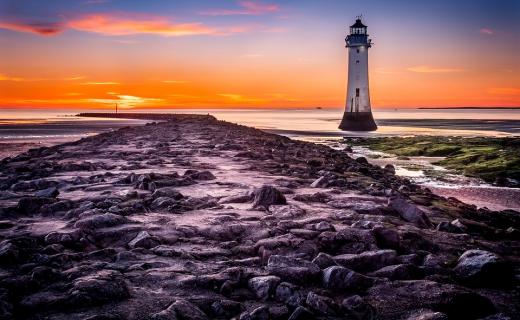
By Amanda Boldenow
If there were do-overs for college, I’d choose a biology major over literature. I’m supposed to discuss the importance of literature in life, but stick with me. I chose books because I love stories, subtext, and metaphor. Doctor Who’s companions enter the Tardis and say, “It’s bigger on the inside.” The same is true about a book. There’s the story of what happens, but really it’s about themes and symbolism and the human condition, and there’s so much to explore that some books have whole other books dedicated to unpacking them. As someone with a touch of claustrophobia, I love this about books—they are so roomy. And thanks to works by Rachel Carson, I’ve learned to love similar things about nature.
I first read about Rachel Carson in a textbook sidebar covering the significance of her book Silent Spring. This is how Carson stayed relegated in my cultural knowledge until one fateful day, perusing a bookstore’s shelves, I happened upon another work of hers (I didn’t even know she had other works), The Edge of the Sea. I bought it. As I began reading Carson’s descriptions of the life that lives packed between water and shoreline, I had to pause and say aloud: “Wow. It’s bigger on the inside.”
[caption id="attachment_9021" align="aligncenter" width="300"] Rachel Carson[/caption]
Rachel Carson[/caption]
Readers often like books where they can see themselves in the main character. To my surprise, I saw myself reflected in a barnacle. And a limpet. And a snail. These are not the creatures I ever thought would be my patronus, but there it was. Carson writes:
The barnacle has two advantages that allow it to succeed where almost all other life fails to survive. Its low conical shape deflects the force of the waves and sends the water rolling off harmlessly
The introvert and socially-anxious person inside me said “YES.” Here is a critter I connect with. Build up a little conical shell, hide under it, and let the world batter away. The barnacle is strengthened by stormy seas, I long to be one with the barnacle. Then I read on:
It was not the adult creature, whose shape and firmly cemented base are precise adaptations to the surf, that gained a foothold here; it was the larva. In the turbulence of heavy seas, the delicate larva had to choose its spot on the wave-washed rocks, to settle there, and somehow not be washed away during those critical hours while its tissues were being reorganized in their transformation to the adult form, while the cement was extruded and hardened, and the shell plates grew up about the soft body.
Ok. So it’s actually the soft, fragile baby barnacle that can weather any storm. The adult barnacle just hides from danger. There’s a life lesson there. And in case I was at risk of missing it, Carson finishes:
All of these creatures have exchanged their freedom for a sanctuary from the waves, being imprisoned forever within the chambers they have carved.
Hiding beneath a shell may let the storm roll off one’s back, but it also blocks out sunlight, exploration, and growth. It’s a little scary to connect with the world sometimes, and it can be even scarier to engage in creative expression, like writing, and then put it out into the world. But that’s where the good stuff is, outside the shell.
[caption id="attachment_9022" align="aligncenter" width="300"] A barnacle[/caption]
A barnacle[/caption]
I’m not sure if I’d have made it as a biology major, I’m still pretty certain Mitosis and Meiosis were the twins who were raised by an alligator and founded Atlantis. Biology is iffy, but thanks to Rachel Carson’s beautiful writing, I can engage with more of the world and learn why I should not stay huddled in my shell. Books: they’re bigger on the inside. Shells are not.
This post is part of our annual Lit Counts series, in which writers and readers express why supporting and elevating literary arts—the mission of Lighthouse Writers Workshop— is important to them. If you agree, consider supporting Lighthouse on Colorado Gives Day. Mark your calendar for December 6 or schedule your gift now. Thank you!
Amanda Boldenow is development director and web master for Longmont nonprofit TLC Learning Center. A former high school English teacher, she is a graduate of the Lighthouse Book Project and a contributing editor at FictionUnbound.com. She maintains her home on the web at AmandaBoldenow.com.

